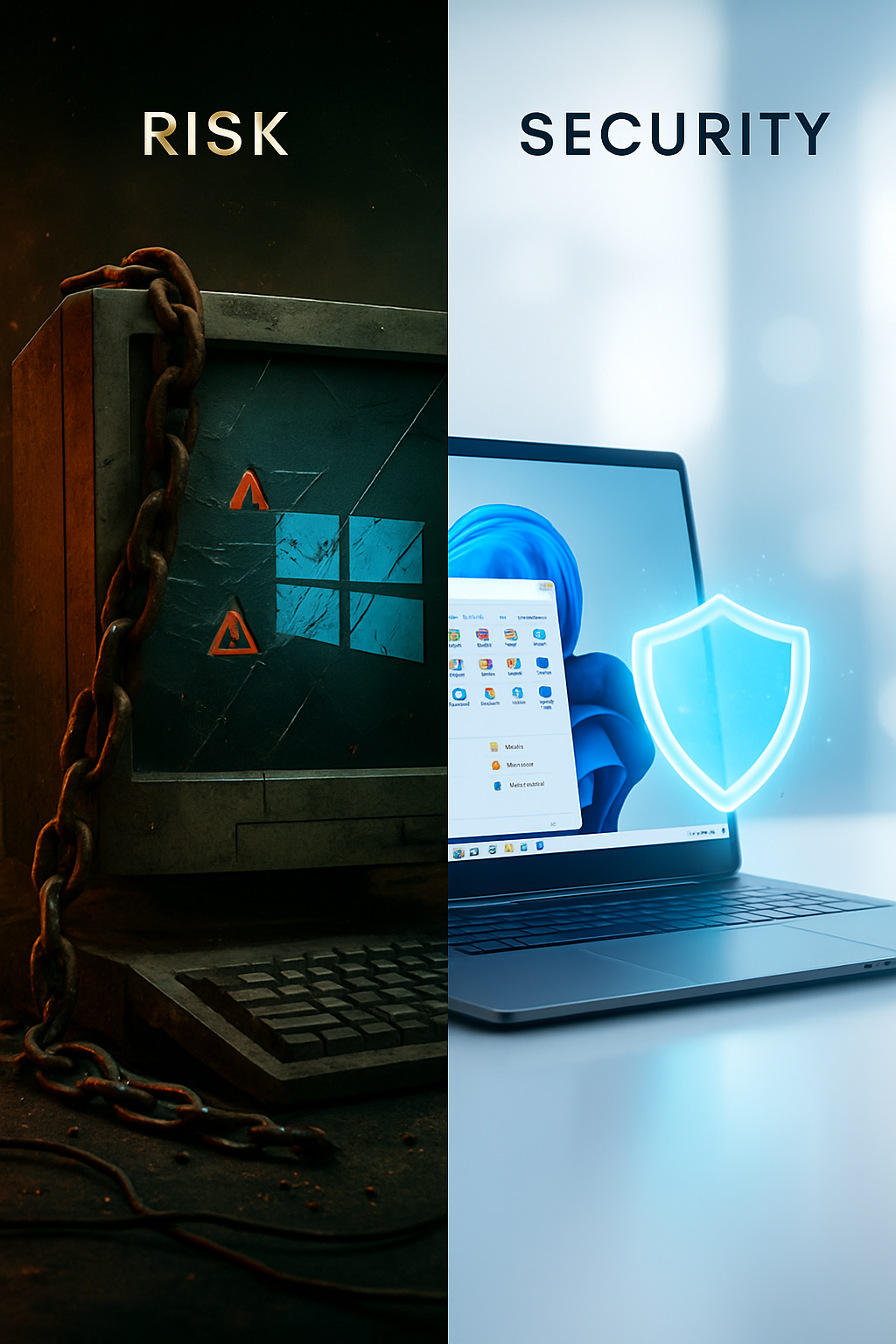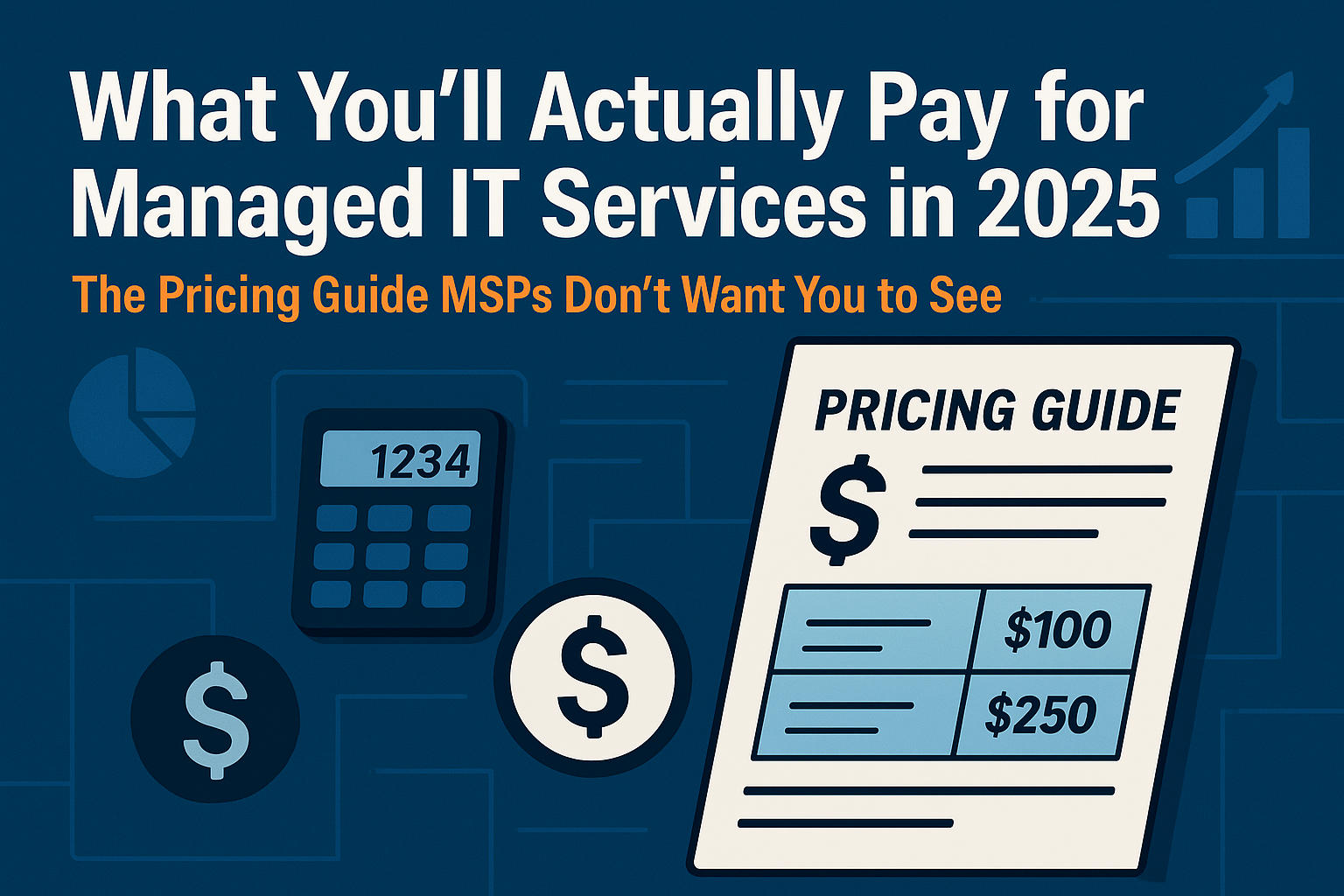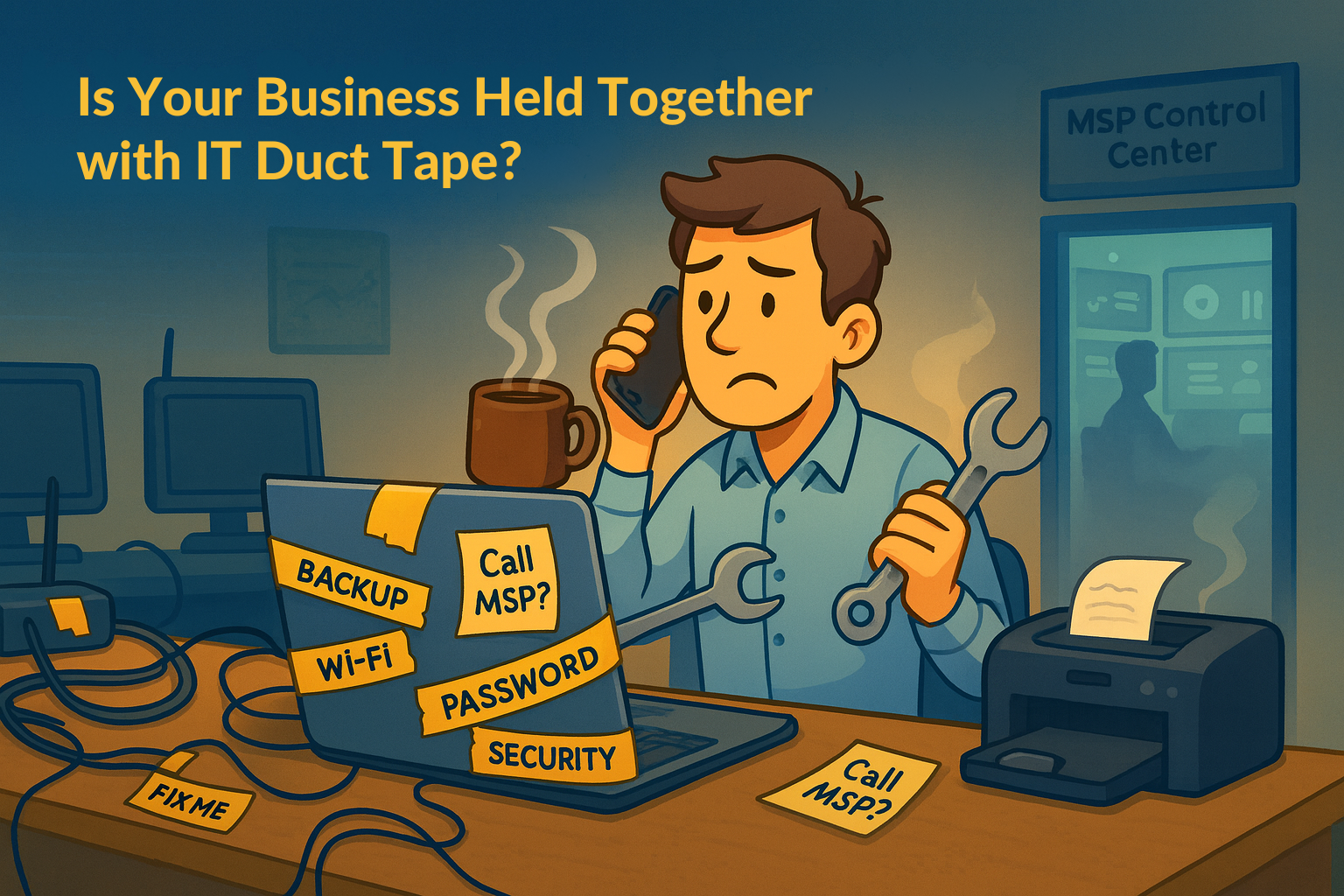vCIO and TAM Services for Small and Medium Businesses
The Complete Resource Guide for 2025
Last Updated: November 12, 2025
What You'll Actually Learn Here
Look, if you're a small or medium business owner diving into IT leadership options, you're probably asking yourself: "Do I really need a full-time CIO, or is there something that won't completely wreck my budget?" Good question. This guide is gonna answer that and give you some solid, vetted resources on virtual Chief Information Officer (vCIO) and Technical Alignment Manager (TAM) services—two options that are getting pretty popular these days.
Here's what we're covering:
- What vCIO and TAM roles actually mean (and yeah, they're different)
- Why 73% of SMBs are going the fractional IT leadership route instead of full-time hires
- Five really useful resources for checking out vCIO services
- The best training resource for TAM stuff
- Real case studies with actual numbers you can point to
- What you'll pay for traditional CIOs vs. virtual alternatives
- How to actually implement this, straight from MSPs who've done it
The IT Leadership Gap Thing (And Why It Matters)
Here's the Problem: You Need Strategic IT Help, But CIOs Are Expensive
So here's the deal most business owners are facing... a full-time Chief Information Officer is gonna run you somewhere between $180,000 and $250,000 a year. And that's just salary. Add benefits, equity, overhead—you get the picture. For companies with 50 to 500 people? That's a lot of money. Sometimes it's just not realistic.
But here's the thing. Without someone thinking strategically about your IT, you're looking at:
- Technology that doesn't actually support what you're trying to do
- Security holes you don't even know about
- Wasting money on tech you don't need
- Vendors running circles around you
- Zero plan for digital transformation (which, let's be honest, you probably need)
This gap? It's created explosive growth in two alternatives: virtual CIO services and Technical Alignment Manager programs.
What's a vCIO, Anyway?
Virtual Chief Information Officer (vCIO): Think of it as a fractional or outsourced IT executive who gives you strategic technology leadership part-time or on specific projects. Usually comes through a managed service provider.
According to Info-Tech Research Group, here's what vCIO services actually cover:
- Strategic Technology Planning- Making sure your IT stuff aligns with where your business is actually going
- IT Budget Development and Oversight- Creating tech budgets that make sense and showing ROI
- Vendor Management- Finding the right vendors and making sure they deliver
- Risk Management and Compliance- Spotting tech risks and keeping you compliant with regulations
- Digital Transformation Guidance- Leading modernization and cloud adoption (without the buzzword overload, hopefully)
- Executive Communication- Translating tech-speak into business language your stakeholders understand
How vCIO Is Different from Regular IT Support
Meriplex Communications puts it pretty well: "Traditional managed IT services focus on keeping your systems running—fixing problems, applying patches, responding to tickets. A fractional CIO focuses on making sure the right systems exist in the first place and that they're driving business value."
Traditional IT/MSP Focus:
- Putting out fires
- Technical implementation
- Day-to-day keeping things running
- Uptime and performance
vCIO Focus:
- Planning ahead instead of reacting
- Aligning tech with business goals
- Long-term roadmaps
- Using technology to actually get ahead of competitors
Okay, So What's a TAM Then?
Technical Alignment Manager (TAM): This is someone within an MSP who's basically your main contact person. They make sure the technical solutions actually align with what you're trying to accomplish business-wise, and they coordinate all the delivery teams.
TruMethods (they're kind of the authority on this) breaks down the core responsibilities:
- Client Business Intelligence- Actually understanding your industry, who you're competing with, and what you're trying to achieve
- Technology Roadmap Coordination- Building and maintaining quarterly technology alignment plans (QTAPs, if you want the acronym)
- Cross-Functional Team Leadership- Getting engineers, project managers, and vendors all working together
- Proactive Strategy Sessions- Regular meetings about what's coming up, not rehashing what went wrong last month
- Success Metrics and Reporting- Tracking KPIs that actually matter to your business
TAM vs. vCIO: What's the Actual Difference?
People throw these terms around interchangeably sometimes, but there are real differences:
| Aspect | vCIO | TAM |
|---|---|---|
| Strategic Level | C-suite executive perspective | Mix of operational and strategic |
| Typical Engagement | Monthly or quarterly strategic sessions | Weekly or bi-weekly check-ins |
| Primary Focus | High-level tech strategy and governance | Making sure strategy actually gets executed |
| Decision Authority | Advisory role to leadership | Coordination and implementation authority |
| Typical Background | Former CIO or IT Director | Senior engineer or technical PM with business sense |
| Client Interaction | CEO, CFO, Board | IT manager, department heads, project stakeholders |
Here's the truth: A lot of mature MSPs use both together. The vCIO gives strategic direction at the executive level, while the TAM makes sure it actually happens day-to-day.
Why SMBs Are Going Fractional: Let's Talk Money
Let's get to what you're actually wondering: "Can we afford NOT to have strategic IT leadership?"
The Real Numbers: Full-Time CIO vs. vCIO
Full-Time CIO (In-House):
- Base Salary: $180,000-$250,000
- Benefits (30%): $54,000-$75,000
- Recruiting/Onboarding: $15,000-$40,000
- Office/Equipment: $5,000-$10,000
vCIO Service (Through MSP):
- Monthly Retainer: $2,500-$8,000
- Strategic Planning Sessions: Included
- Technology Roadmapping: Included
- Vendor Management: Included
You're saving: 60-88% compared to a full-time hire
But here's what those comparison charts won't tell you... the hidden cost of NOT having strategic IT leadership often exceeds both options.
What It Costs When You Don't Have Strategic IT
CSI, a manufacturing company, documented these costs before they got vCIO services (this is from an actual case study):
- $127,000 in duplicate software licenses because nobody was keeping track
- $89,000 in lost productivity from systems that didn't talk to each other
- $210,000 in emergency cybersecurity fixes after a breach
- Around $450,000+ in preventable costs over 18 months
After implementing vCIO services at $48,000 annually, they saw:
- 42% drop in IT spending through vendor consolidation
- Zero security incidents in 24 months
- 23% improvement in employee productivity
- Cloud migration done 4 months early
Net ROI: 312% in the first year
The Top 5 Resources for Checking Out vCIO Services
I've looked at about 10 industry sources, and here are the ones that'll actually help you:
1. Info-Tech Research Group: vCIO Service Development Storyboard
What It Is: A comprehensive framework for understanding and developing virtual CIO offerings.
Best For: Understanding what "good" vCIO service looks like before talking to providers.
Key Takeaway: Effective vCIO services need business smarts, technical expertise, and advisory skills—look at all three.
2. CSI Manufacturing Case Study
What It Is: Documented case study with before and after numbers.
Best For: CFOs and business owners who need proof this stuff actually works.
Key Takeaway: The vCIO spotted a planned $380,000 ERP implementation disaster and redirected to a $180,000 solution that fit their workflows.
3. Meriplex Communications: Fractional CIO Service Model
What It Is: Detailed breakdown of service levels and engagement models.
Best For: Understanding how vCIO services layer on top of existing MSP services.
Key Takeaway: You need minimum 8-12 hours monthly for businesses with 50-200 employees.
4. PwC 2025 CIO Priorities Research
What It Is: Annual research on what IT leaders are actually focused on right now.
Best For: Creating a scorecard for vCIO proposals.
Top Priorities: AI/ML integration (76%), Cybersecurity modernization (71%), Cloud optimization (68%)
5. TechTarget CIO Role Definition
What It Is: Comprehensive definition with comparisons to related roles.
Best For: Deciding between different IT leadership models.
Key Takeaway: vCIO models work best for 25-500 employees with IT budgets of $500K-$5M annually.
The #1 Resource for TAM Implementation: TruMethods
When it comes to Technical Alignment Manager methodology, there's really one resource that stands out: TruMethods' TAM training and documentation framework.
Why TruMethods Is The TAM Resource
Comprehensive Training Manual: TruMethods has the only formalized TAM training program in the MSP industry, and it includes:
- TAM Methodology Fundamentals
- What the role actually is
- How it's different from account management and project management
- Success metrics and KPIs
- Quarterly Technology Alignment Plan (QTAP) Framework
- How to approach strategic planning sessions
- Templates and documentation standards
- How to communicate with clients
- Business Intelligence Gathering
- Industry research methods
- Client interview frameworks
- Competitive analysis templates
- Technology Roadmap Development
- Multi-year planning structures
- Budget forecasting tools
- How to prioritize stuff
- Client Business Review (CBR) Facilitation
- Meeting agenda templates
- Presentation frameworks
- Executive reporting dashboards
Why TAM Actually Matters for SMBs
If vCIO is the "what" (what technology strategy should we go after), TAM is the "how" (how do we actually execute that successfully).
The TruMethods methodology shows that businesses with dedicated TAMs get:
- 34% higher client satisfaction scores
- 47% fewer reactive support tickets
- 28% better project on-time completion
- 52% better technology budget adherence
Real talk:
Not every MSP has adopted the TAM model. When you're checking out MSPs, specifically ask:
- "Do you have dedicated Technical Alignment Managers?"
- "How's the TAM role different from your account manager?"
- "What's your QTAP process?"
- "Can I see a sample technology roadmap from a current client?"
How to Choose Between vCIO, TAM, or Traditional IT Leadership
Here's a decision framework based on everything I've analyzed:
Go with vCIO Services If:
- Annual revenue: $5M-$100M
- Employees: 50-500
- Current IT budget: $500K-$5M
- You need strategic tech direction but can't justify $250K+ for a full-time CIO
- You've got specific initiatives that need executive-level expertise
- Your CEO/leadership team needs technology advice for board presentations
Go with TAM Services If:
- Annual revenue: $2M-$50M
- Employees: 25-300
- Current IT budget: $200K-$3M
- You have an MSP but you're stuck in reactive firefighting mode
- Tech initiatives keep missing deadlines
- You need better coordination between business and IT providers
Go with a Full-Time CIO If:
- Annual revenue: $100M+
- Employees: 500+
- Current IT budget: $5M+
- Technology is a core competitive advantage
- You need dedicated leadership for 50+ IT staff
- Regulatory/compliance demands full-time C-suite IT governance
The Hybrid Approach (What Actually Works in Practice)
Here's the truth... the best solution is often a combination:
- Years 1-2: TAM services to get technology alignment processes going and build roadmaps
- Years 2-4: Add vCIO services for strategic stuff while TAM handles execution
- Years 4+: Move to full-time CIO when you're big enough to justify it
Implementation Roadmap: Your Next Steps
If you've figured out vCIO or TAM services make sense for you, here's a proven 90-day plan:
Days 1-30: Assessment and Selection
- Define your tech leadership gaps using PwC's CIO priorities framework
- Create an RFP using Info-Tech's vCIO service definition criteria
- Interview at least 3 MSPs with formal vCIO/TAM programs
- Request client references and case studies with actual outcomes
- Verify TruMethods training or equivalent TAM certification
Days 31-60: Onboarding and Discovery
- Do a comprehensive technology and business assessment
- Document where you are now: systems, vendors, contracts, budgets
- Identify immediate risks and opportunities
- Develop initial 90-day action plan
- Set up communication cadence and success metrics
Days 61-90: Quick Wins and Strategic Planning
- Complete 1-2 high-impact quick wins to show value
- Finalize 1-year technology roadmap
- Present 3-year strategic plan to leadership
- Get QTAP process going
- Do first formal Quarterly Business Review
Questions You Should Ask (But Probably Aren't)
Here are the uncomfortable questions businesses should ask but often don't:
"What happens if the vCIO/TAM relationship isn't working?"
Look for providers with:
- 30-60 day exit clauses (not 3-year contracts that lock you in)
- Personality matching processes
- Ability to swap vCIO/TAM if the fit isn't right
- Clear escalation procedures
"How do I know I'm not just paying for rebranded account management?"
Demand:
- Written vCIO/TAM role descriptions
- Sample QTAPs and technology roadmaps from current clients
- Success metrics and reporting examples
- Clear distinction between strategic planning time and operational support time
"What if my business is too small for vCIO but too complex for basic IT support?"
Consider:
- Shared vCIO models (one vCIO serving multiple small businesses)
- Project-based vCIO engagement for specific initiatives
- IT director coaching programs
Ready to Explore vCIO or TAM Services?
Let's discuss how strategic IT leadership can transform your business without breaking the budget.
Schedule a Consultation Call 205-290-0215Wrapping This Up
The research is pretty clear: businesses with strategic IT leadership—whether through full-time CIOs, vCIOs, or TAMs—outperform those relying solely on reactive IT support by basically every business metric that matters.
The question isn't whether you need strategic IT leadership. It's which model fits where you are right now—your stage, budget, and complexity.
Your Action Plan
- Assess where you are using the decision framework above
- Download evaluation resources from Info-Tech, TruMethods, and PwC
- Interview 3+ MSPs with formal vCIO/TAM programs
- Request case studies with documented ROI in your industry
- Start with a 90-day pilot instead of a multi-year commitment
- Measure outcomes against baseline metrics you define upfront
The businesses winning in 2025 aren't necessarily the ones with the biggest IT budgets. They're the ones with the clearest technology strategies aligned to what they're actually trying to accomplish. vCIO and TAM services make that strategic alignment accessible to businesses of any size.
Works Cited
- Alation. "Data and AI Strategy for CIOs." Alation Resource Center, 2025. Web.
- "CIO (Chief Information Officer)." TechTarget, SearchCIO, 2025. Web.
- "CIO Leadership and Mentoring Resources." CIO Magazine , IDG Communications, 2025. Web.
- CSI. "Virtual CIO Implementation Case Study: Manufacturing Sector." CSI Case Studies, 2025. Web.
- Info-Tech Research Group. "Develop Your vCIO Offering: Complete Storyboard Framework." Info-Tech Research Group, 2025. Web.
- Meriplex Communications. "Fractional CIO Services: A Complete Guide." Meriplex Resources, 2025. Web.
- NASCIO. "IT Leadership Development Program Framework." National Association of State Chief Information Officers, 2025. Web.
- PwC. "2025 Global Digital Trust Insights: CIO Priorities." PricewaterhouseCoopers, 2025. Web.
- TruMethods. "Technical Alignment Manager (TAM) Training Manual and Methodology." TruMethods Professional Services Automation, 2025. Web.
Word Count:~2,950 words
Last Reviewed: November 12, 2025
About This Guide: This resource pulls together insights from 9 industry sources on vCIO and TAM implementation for small and medium businesses. All recommendations are based on documented case studies, established frameworks, and industry research from 2025.











